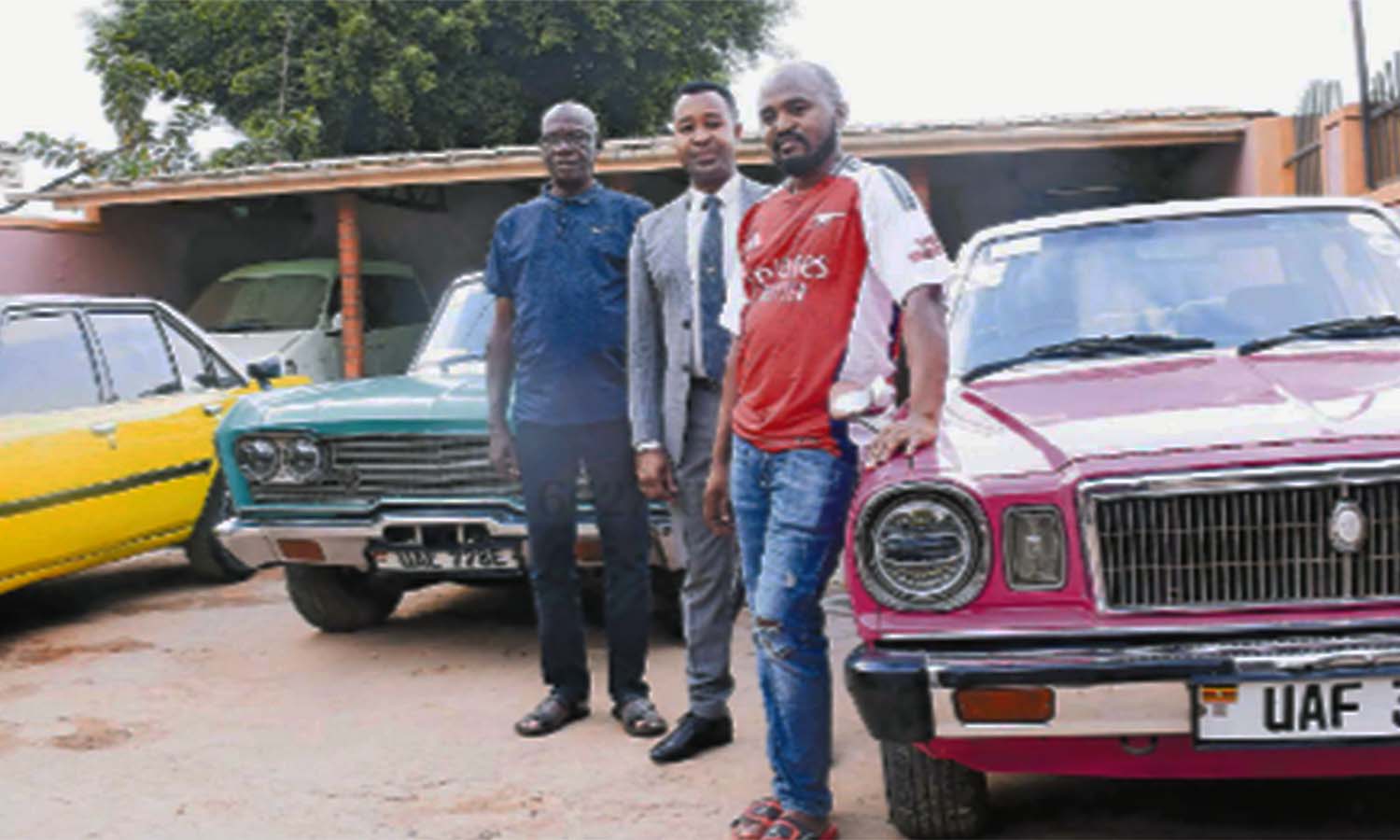Prime
Why Uganda is failing to turn waste into industry

Piles of garbage in Uganda have been collected and buried without any meaningful activity such as electricity generation. PHOTO ALEX ASHABA
What you need to know:
- In its report titled: “What a Waste 2.0,” released last month, the World Bank warned that without urgent action, global waste will pile to 3.5 billion over the next 30 years—a 70 per cent increase from 2.01 billion in 2016. While waste management is an everyday conversation in capitals of developed countries including making the best out of it like generating electricity, this is not the case in developing countries like Uganda, writes Frederic Musisi.
Once upon time, Plessis Gassot, a 50 minutes’ drive from the French capital—Paris—central business district, was home to one of the biggest quarry sites—the size of three municipal towns—for sand and gravel that fed a big part of France’s construction boom from way back in time.
As soon as the area started running out of its purpose in the 1970s, the site owner and city authorities pondered one option: refill up the huge pits, level the entire expanse, restore it with green, and turn it into a park.
Fast forward to the 1980s another idea came into mind; to use the pits to bury solid waste and other non-hazardous materials whose volumes were starting to menace city dwellers.
Today, the landfill site is a complete waste management centre with a licence to handle up to 950,000 tonnes of solid waste annually, although currently about 3,500 tonnes is received daily. From the buried waste material some 17 megawatts of biogas is generated, and consumed by nearby towns. In essence the towns, have all the reasons to feed the site with solid waste.
The site is run by Véolia Propreté, a French waste management company with a business footprint across the world. In Europe alone, Véolia operates 111 waste land fill sites, 19 in Latin America, 17 in Asia, and five in Australia.
The company has footprint in Africa,including Uganda where it was awarded a tender by National Water and Sewerage Corporation to construct and operate the second phase of the Nakivubo waste water treatment plant with capacity of 45,000 cubic metres and biogas production. Its focus is in either liquid waste management or clean water production but not solid waste management.
This, Véolia’s senior executive vice president for Africa, Mr Denis Le Maout, said recently is mainly as a result of “circumstances” that are cross-cutting from East to West Africa and are handicapping waste management businesses despite the fact that most countries are choking on piles of garbage.
“Solid waste is lucrative as we see it here but not so in many African cities as our studies have shown,” Mr Le Maout said during a recent site visit to the company’s offices outside Paris.
Trash is gold, but...
Véolia’s Plessis Gassot waste management site offers both examples and lessons for Uganda, and specifically to Kampala Capital City Authority (KCCA) which is currently looking for some $50m (Shs188b) to gazzatte another landfill area in Mukono District.
Kampala split in five divisions, Kampala central, Rubaga, Makindye, Kawempe and Nakawa, has about one truck for each division for garbage collection, which are complemented by three contractors—Nabugabo Updeal, Homeklin and Kampala Solid Waste Consortium. But still, all these combined don’t operate more than 40 trucks daily.
KCCA statistics show that Kampala generates about 2,800 tonnes of garbage per day, out of which the City Authority is supposed to collect and transport 1,000 tonnes and deposit it at Kiteezi landfill which was gazetted in the mid-1990s.
The landfill, about 12Km from the city centre, measures about 12 hectares and is managed by a private contractor; although KCCA says it spends some Shs3.32b. But over the years, the Authority has claimed that is inadequate to keep the site running. Worse still, the site is said to have filled up without any meaningful activity such as electricity generation from the piles of garbage collected and buried over the last 22 years.
That notwithstanding, KCCA only manages to collect 470 tonnes per day from public institutions, leaving 530 tonnes uncollected, while the contactors are tasked to collect 1,200 tonnes of solid waste from informal sectors.
As a result, the remaining uncollected garbage then finds its way from drainage channels to other unauthorised locations.
This partly “complicates” the waste management equation, Mr Maout noted.
One of the circumstances working in disfavour of waste management business in Kampala and in many African capitals, which is also exacerbating the garbage crisis as noted by the World Bank, is the chaotic urbanisation which mostly makes collection not only difficult but also expensive.
The World Bank in its September report, reinforced that rapid urbanisation and population growth create larger population centres, making the collection of all waste and land procuriement for treatment and disposal more and more difficult.
As a result, as countries develop from low-income to middle- and high-income levels, their waste management situations also need to “evolve” correspondingly.
For example, the Plessis Gassot landfill site receives an average of 400 garbage trucks daily from the entire Paris Municipality.
In the United Kingdom alone, Véolia collects about a third of all homes and businesses garbage and generates electricity enough to power some 600,000 homes a year. Because waste is treated more as a commodity than a throw away, there is a demand and supply characteristic to it.
The other aspect, in Paris and several other developed capitals, is that their population look at proper waste management as a social responsibility than a burden as seen in Kampala and other developing countries. However, this is with the exception of Kigali, where littering is outlawed and punishable by law.
“You need to have a population that sees waste collection as more of their obligation, and is willing to pay to have their waste collected,” Mr Maout said, adding: “You need to have a holistic approach that ensures that everyone is gaining.”
In fact, solid waste is most treated as a social responsibility in Japan where its disposal is taught in schools; thus inculcating the culture.
Waste plant
The KCCA executive director Jennifer Musisi told this newspaper in a recent interview that the Authority recently acquired 135 acres of land in Dundu, Kyampisi Sub-county in Mukono District to establish waste disposal and a treatment plant estimated to cost more than Shs185b.
She revealed that the KCCA has engaged the services of World Bank to support in undertaking feasibility studies and other Public Private Partnership (PPP) processes as a transaction advisor. However the authority was yet to secure its bargain of Shs10b under the PPP.
Turn trash to gold
In a 2014 study titled: ‘Characterisation of municipal waste in Kampala,’ the researchers observed that the solid waste consisted of 88.5 per cent organics, 3.8 per cent soft plastics, 2.8 per cent hard plastics, 2.2 per cent paper, 0.9 per cent glass, 0.7 per cent textiles and leather, 0.2 per cent metals, and 1.0 per cent for others.
The study noted further that on average, the waste had a moisture content of 71.1 per cent and contained nitrogen 1.89 per cent, phosphorous 0.27 percent, and potassium 1.95 per cent, hence making its gross energy content rich—by 17.3kgs.
Although the study maintained that organic waste, owing to its moist content was not suitable for energy recovery through incineration unless more studies are conducted, it concluded that it was suitable for production of compost—fertilisers.
LESSONS FROM ELSEWHERE
Ethipia, France and Japan
Ethiopia is currently building Africa’s first energy plant that converts solid waste into electricity. It is taking advantage of the Koshe dump site - the largest in the country about the size of 36 football pitches and was created over the last 50 years.
In 2017, a garbage landslide in the area killed 114 people, prompting government to find a solution. Rubbish from the landfill will be incinerated in a combustion chamber. The heat produced will be used to boil water until it turns to steam. That steam will drive a turbine generator that produces electricity. Waste-to-energy plants are already trendy in most developed countries, from France with 126 plants to Japan.
Guarantees, agreements
Véolia’s senior executives told this newspaper that although they had been “interested” in the project, owing to the circumstances surrounding waste management around Kampala the project did not make economic sense for them.
Besides the problematic solid waste collection that would render the waste management centre under-served, the Veolia’s executives revealed that in such an environment, any investor would require sovereign guarantees and power purchasing agreements, which government was not ready to guarantee.
Train in waste management
Yokohama, Japan’s second largest city, as a leader in innovative urban planning, is now helping its developing peers in both in Africa and Southeast Asia, through the Japanese government’s ‘African Clean Cities Platform’ (ACCP) initiative for offering courses and trainings in appropriate waste management methods.
Since the ACCP was mid-wifed last year, as of this month, some 25 African technocrats have been invited to Yokohama and trained in waste management. In fact, every details seems plausible, but officials at the biggest waste management plant in Yokohama told Daily Monitor that “African officials cited culture” as the main driver of the current solid waste crisis.
What does the future hold for Uganda, Africa?
Livable environment
To attract international trade and investment, as well as grow their tourism potential, Kampala like all other capitals in sub-Saharan Africa, should develop highly livable and sustainable urban environments. This includes dealing with the chronic solid waste problems, from Lagos in West Africa to Maputo in Eastern Africa. But the solutions borrowed by developed countries seems will take a little longer. Why? In land-scarce Japan for example, up to 80 per cent of garbage is incinerated, while a similar percentage ends up in landfills in France. Incineration and landfills are two waste management models that are operated worldwide and successful in especially developed countries, but not quite in developing countries.
Turn waste into money “African governments need to start looking at waste as a money making venture not as something to be disposed of,” one manager at Yokohama waste management plant noted.
World Bank estimates show that Africa generates nearly 70 million tonnes of waste every year. The volume of waste generated is expected to double in the coming years as Africa’s economy becomes more prosperous and the size and population of its cities explode.
If the waste cannot be turned into any other use, then it can be incinerated. The inability to sort out the garbage has huge impact, not only for our environment and our communities but also for our economic situation. But does Uganda have the policy pointing to any of the two viable alternatives?




